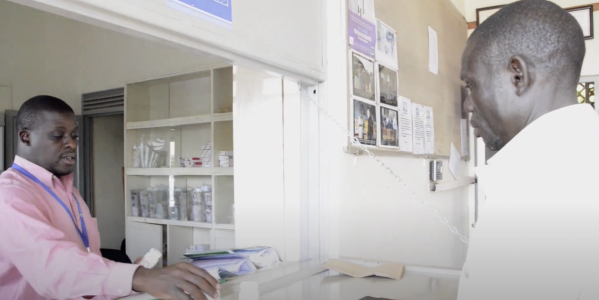How a 5-year plan could save millions of lives: The future of PEPFAR and its impact on HIV prevention
By
Veronica E.
- Replies 0
Since its launch in 2003, PEPFAR (the President's Emergency Plan for AIDS Relief) has stood as a beacon of hope for millions of people affected by HIV/AIDS worldwide.
This monumental initiative, backed by former President George W. Bush, has saved countless lives, provided life-saving treatments, and prevented the spread of HIV in vulnerable populations, especially children.
But now, PEPFAR’s future is uncertain—prompting important conversations about how we can continue protecting those most at risk.
So, what’s next for PEPFAR? And how can we help save more lives?
The Urgent Need for a 5-Year Lifeline
A recent call from global health experts highlights the need for a 5-year plan to secure PEPFAR’s future.
In this crucial window, PEPFAR could transition to sustainable support from local governments across Africa—helping strengthen their health systems and ensuring that vital services continue.
Without this transition, the stakes are high: by 2030, we could see a dramatic rise in new HIV infections, AIDS-related deaths, and orphaned children.
These aren’t just statistics—they represent real lives, with children at the heart of this crisis.
Also read: Millions of lives at risk: Global HIV progress threatened by alarming budget cuts
PEPFAR’s Legacy and the Threat of Uncertainty
PEPFAR has already made a profound impact, saving an estimated 25 million lives, supporting millions of orphans, and ensuring over 5 million babies were born HIV-free.
With an investment of over $110 billion, the program has set a global standard for humanitarian aid.
However, following recent budget uncertainties and a temporary pause in funding due to an executive order from the Trump administration, the program’s future is now in jeopardy.
While some funding has resumed, the full restoration of PEPFAR’s budget remains unclear, leaving many in limbo.
Also read: Is tuberculosis making a comeback? How USAID cuts could trigger a global health crisis
The Ripple Effects of Funding Uncertainty
The uncertainty surrounding PEPFAR’s funding has already had real-world consequences.
Health professionals in affected countries, like Dr. Uche Amalu Jr. in Nigeria, report widespread panic as patients stockpile medications due to fears of shortages.
Even with these challenges, local governments, like Nigeria, have stepped up, approving substantial funding to maintain essential health services.
The proposed 5-year plan calls for more local investment in health infrastructure, fostering sustainability and reducing reliance on external support.
Also read: Global aid shifts raise concerns over health and hunger, officials warn
The Call for Continued Support and Local Empowerment
The five-year plan not only aims to sustain PEPFAR’s progress but also calls for a transition of responsibility to African governments and communities by 2030.
This plan is already taking shape, with many African countries significantly increasing their domestic health spending and co-financing HIV programs.
The continued support from the US will allow these efforts to flourish, ensuring that HIV programs are permanently integrated into local healthcare systems.
Supporting PEPFAR is not just an act of goodwill—it aligns with US interests in strengthening international relations and improving global health.
A strong global health system is a crucial defense against future pandemics, migration crises, and geopolitical instability.
By continuing to invest in PEPFAR, the US can help stabilize health systems, foster international partnerships, and protect future generations from the threat of HIV/AIDS.
PEPFAR has stood as a powerful example of what global cooperation and compassion can achieve.
As discussions around its future continue, many are hopeful that the program’s legacy of saving lives will be protected and carried forward.
Read next: Are critical services at risk? Concerns grow over key agency cuts

At The GrayVine, we believe every voice matters. Do you think PEPFAR should continue? What role can we play in protecting its legacy? Share your thoughts in the comments and consider spreading the word. Let’s make sure this life-saving work doesn’t stop here!
This monumental initiative, backed by former President George W. Bush, has saved countless lives, provided life-saving treatments, and prevented the spread of HIV in vulnerable populations, especially children.
But now, PEPFAR’s future is uncertain—prompting important conversations about how we can continue protecting those most at risk.
So, what’s next for PEPFAR? And how can we help save more lives?
The Urgent Need for a 5-Year Lifeline
A recent call from global health experts highlights the need for a 5-year plan to secure PEPFAR’s future.
In this crucial window, PEPFAR could transition to sustainable support from local governments across Africa—helping strengthen their health systems and ensuring that vital services continue.
Without this transition, the stakes are high: by 2030, we could see a dramatic rise in new HIV infections, AIDS-related deaths, and orphaned children.
These aren’t just statistics—they represent real lives, with children at the heart of this crisis.
Also read: Millions of lives at risk: Global HIV progress threatened by alarming budget cuts
PEPFAR’s Legacy and the Threat of Uncertainty
PEPFAR has already made a profound impact, saving an estimated 25 million lives, supporting millions of orphans, and ensuring over 5 million babies were born HIV-free.
With an investment of over $110 billion, the program has set a global standard for humanitarian aid.
However, following recent budget uncertainties and a temporary pause in funding due to an executive order from the Trump administration, the program’s future is now in jeopardy.
While some funding has resumed, the full restoration of PEPFAR’s budget remains unclear, leaving many in limbo.
Also read: Is tuberculosis making a comeback? How USAID cuts could trigger a global health crisis
The Ripple Effects of Funding Uncertainty
The uncertainty surrounding PEPFAR’s funding has already had real-world consequences.
Health professionals in affected countries, like Dr. Uche Amalu Jr. in Nigeria, report widespread panic as patients stockpile medications due to fears of shortages.
Even with these challenges, local governments, like Nigeria, have stepped up, approving substantial funding to maintain essential health services.
The proposed 5-year plan calls for more local investment in health infrastructure, fostering sustainability and reducing reliance on external support.
Also read: Global aid shifts raise concerns over health and hunger, officials warn
The Call for Continued Support and Local Empowerment
The five-year plan not only aims to sustain PEPFAR’s progress but also calls for a transition of responsibility to African governments and communities by 2030.
This plan is already taking shape, with many African countries significantly increasing their domestic health spending and co-financing HIV programs.
The continued support from the US will allow these efforts to flourish, ensuring that HIV programs are permanently integrated into local healthcare systems.
Supporting PEPFAR is not just an act of goodwill—it aligns with US interests in strengthening international relations and improving global health.
A strong global health system is a crucial defense against future pandemics, migration crises, and geopolitical instability.
By continuing to invest in PEPFAR, the US can help stabilize health systems, foster international partnerships, and protect future generations from the threat of HIV/AIDS.
PEPFAR has stood as a powerful example of what global cooperation and compassion can achieve.
As discussions around its future continue, many are hopeful that the program’s legacy of saving lives will be protected and carried forward.
Read next: Are critical services at risk? Concerns grow over key agency cuts
Key Takeaways
- Experts are calling for a five-year transition plan for the PEPFAR program to shift support toward local governments in Africa, aiming to prevent a significant rise in HIV infections and deaths among children.
- PEPFAR has saved 25 million lives globally since 2003 and has played a key role in preventing mother-to-child transmission of HIV, with 5.5 million babies born HIV-free.
- Concerns are growing over disruptions in funding for HIV care and other health services due to pauses in American foreign aid and the termination of some USAID-funded projects.
- Domestic health spending in PEPFAR-supported countries has significantly increased, indicating growing local ownership and a strong potential for a successful transition of HIV program support.
At The GrayVine, we believe every voice matters. Do you think PEPFAR should continue? What role can we play in protecting its legacy? Share your thoughts in the comments and consider spreading the word. Let’s make sure this life-saving work doesn’t stop here!







